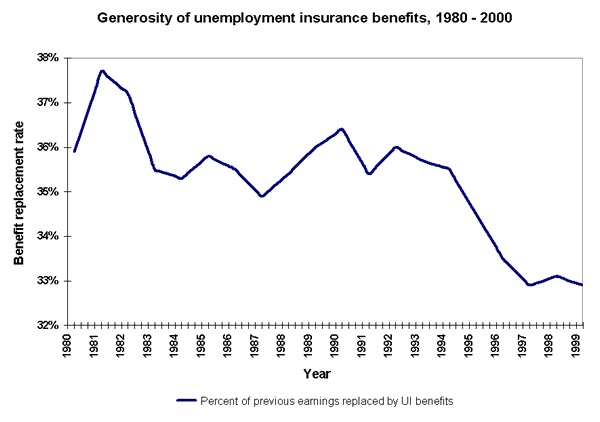A weekly presentation of downloadable charts and short analyses designed to graphically illustrate important economic issues. Updated every Wednesday.
Snapshot for October 3, 2001.
Unemployment benefits fall short
Unemployment insurance benefits provide income security for workers who are unemployed through no fault of their own. Over time, UI benefits have become inadequate, failing to provide enough income for rental housing let alone other necessities like food, clothes, and health care.
The most common measure of UI benefit adequacy is the percentage of a worker’s lost income replaced by benefits. If a worker’s previous earnings were $690 per week, and he or she received UI benefits of $230 per week, then the benefit replacement rate would be 33%.

As the figure above indicates, the percentage of lost income replaced by UI benefits has declined since the 1980s. On average, unemployment insurance benefits now replace less than a third of lost income. Of course, a third is better than nothing, which is what workers receive after the 26th week of unemployment, when benefits run out in most states.
This week’s Snapshot by EPI economist Jeffrey Wenger.
Check out the archive for past Economic Snapshots.
